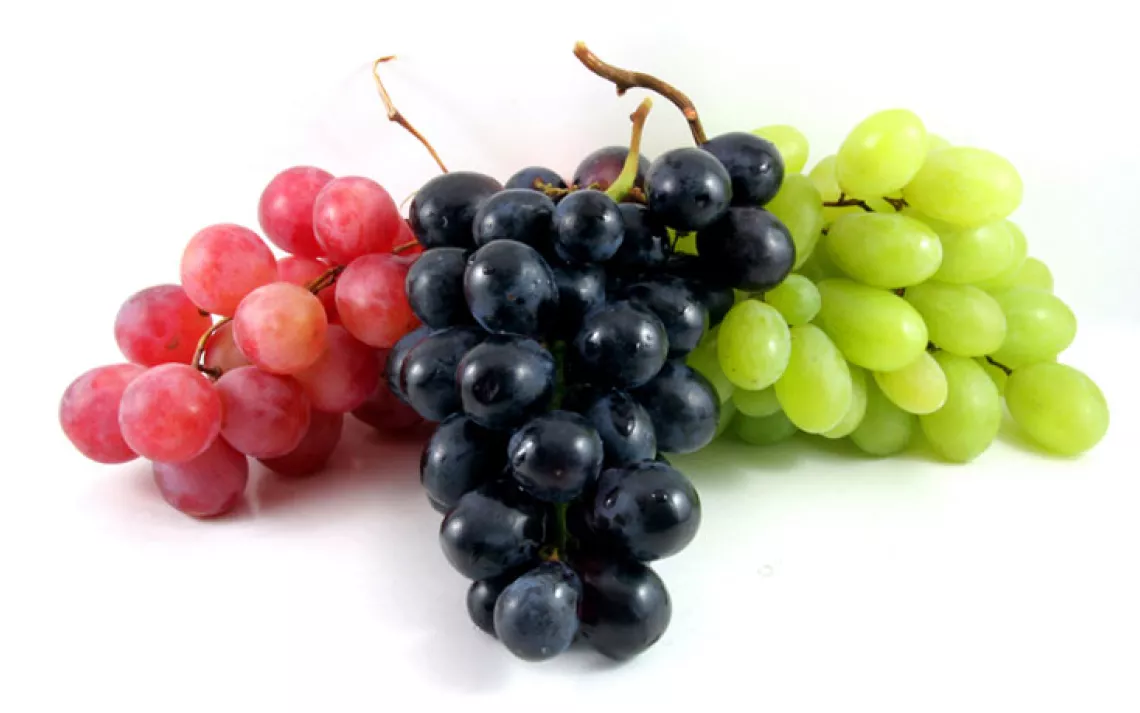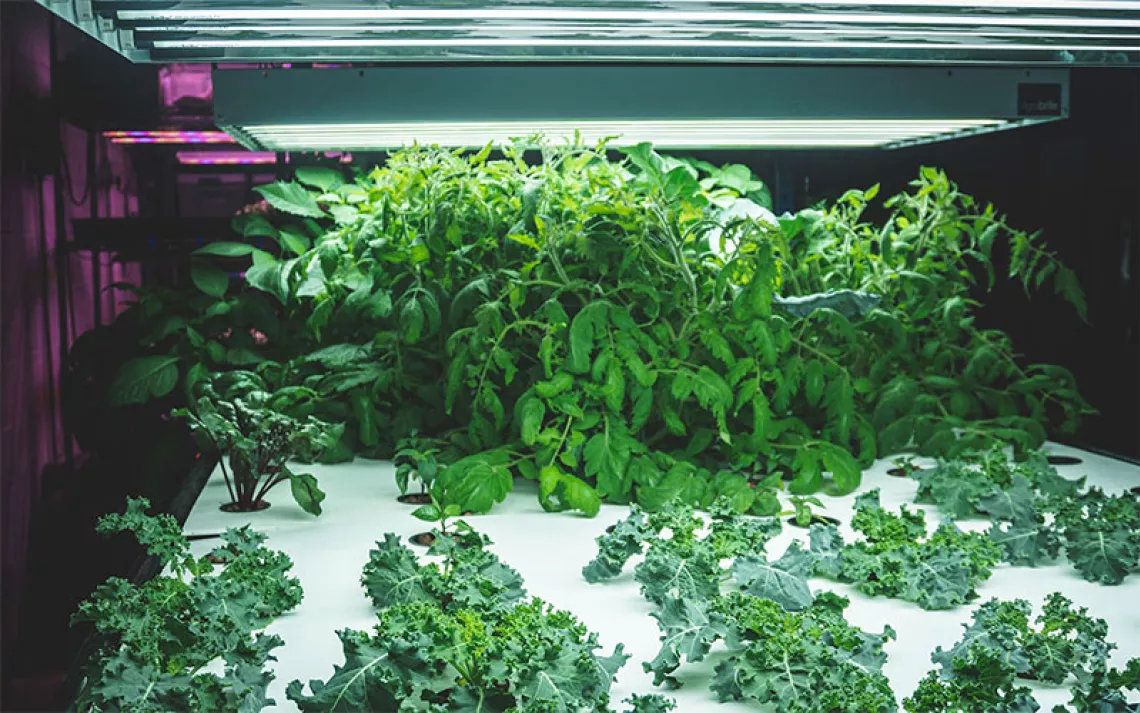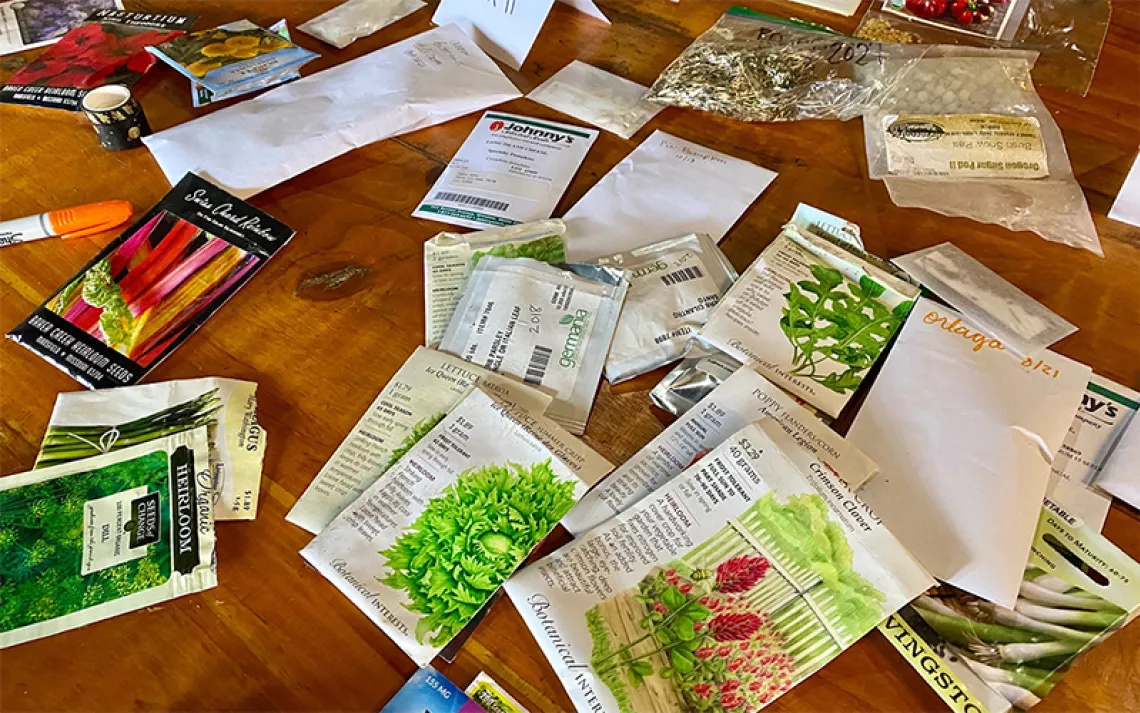4 Pesticides You Might Be Eating

Yeah, we are what we eat, but an Amy isn't an amitraz, and a Ted shouldn't be a tetrachlorvinphos. It's an unfortunate truth that many of our favorite fruits and vegetables contain pesticide residue. Even more unfortunate is how consumers are expected to decipher the health effects themselves. To help, we're naming a few pesticides sometimes found on your favorite produce. All of our selections have great organic alternatives, which means you don't have to stop eating your greens (sorry, kids -- both your own mother and Mother Earth will approve).
1. Grapes: Chlorpyrifos
Smell rotten eggs? You might be getting a whiff of this organophosphate insecticide, which was re-registered by the US EPA in 2006. While it is not toxic in its original state (white/colorless crystals), chlorpyrifos actually becomes toxic once your body processes it, taking a new form called chlorpyrifos oxon. What's particularly alarming is the insecticide's studied effects on children — one study showed that babies born with chlorpyrifos in their systems by way of their mothers' blood displayed increased signs of developmental delays, attention deficit disorders, and hyperactivity disorders than babies without chlorpyrifos in their bloodstreams.
2. Spinach: Permethrin
This insecticide keeps a lot more than mosquitoes away; Permethrin has proven highly toxic to wildlife like honeybees and fish. It's obnoxiously tough to get rid of once it comes into contact with the sediment of aquatic systems, and it can remain absorbed in sediments for more than a year. Also, Permethrin has been classified by the EPA as "likely to be carcinogenic to humans" when it is ingested.
3. Apples: Carbaryl
We'd like to bet that your favorite apple variety doesn't involve la saveur de pet-care product. A 2008 study by the US EPA estimated that this chemical was treated on roughly 40% of the nation's apple crop per year. Because it is designed to disrupt the nervous systems of insects, young, growing children may be susceptible to negative long-term health effects. You can thankfully breathe a little easier for your pets, as the US EPA announced in 2009 that flea collars would no longer include carbaryl.
4. Sweet Bell Peppers: Methamidophos
Bell peppersSometimes used on peppers grown in other countries, methamidophos has displayed the ability to slowly eat away at mild steel and copper alloys. This insecticide is rapidly absorbed by humans once you touch it, taste it, or smell it. Much work has been done to limit its worldwide use, because there's nothing sweet about overstimulating the nervous system for the sake of stimulating your taste buds.
 The Magazine of The Sierra Club
The Magazine of The Sierra Club



